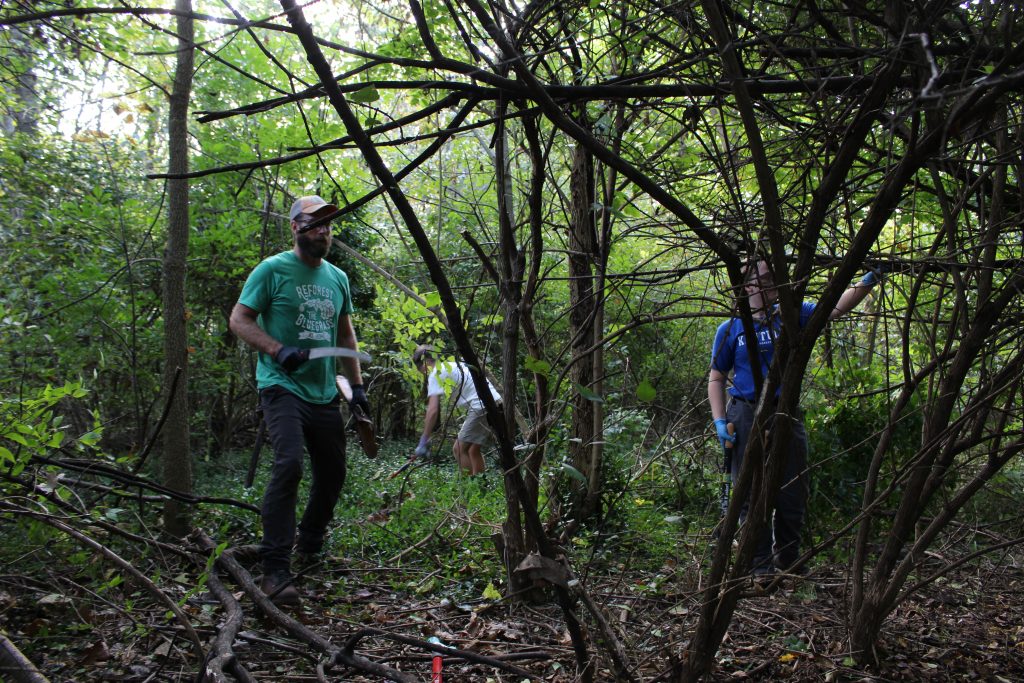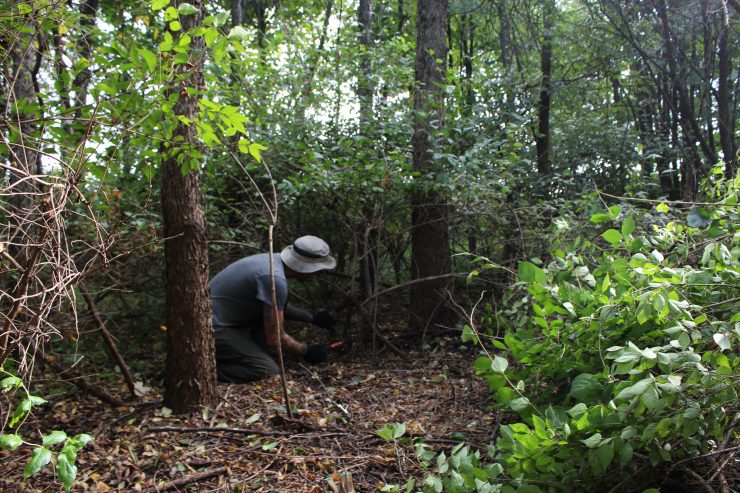On Thursday, October 14, a team of UK and community volunteers met at Masterson Station Park to remove invasive species from a patch of forest. This forested site is not your typical forest, though—nested within the city limits, this forest was planted by community members over twenty years ago as part of one of the first Reforest the Bluegrass events.
Reforest the Bluegrass is a community reforestation program coordinated by the Lexington-Fayette Urban County Government (LFUCG) Division of Environmental Services. According to their website, the Reforest the Bluegrass program has planted over 150,000 trees on over 195 acres since 1999.

With funding support from a 2020 Sustainability Challenge Grant, I and a team of undergraduate research assistants collaborated with faculty from UK Forestry and Natural Resources and Heather Wilson and Nathan Skinner with LFUCG Environmental Services to launch a program evaluating the development of plant communities on Reforest the Bluegrass sites. Over the summer of 2020, we successfully established permanent monitoring plots on all twenty Reforest the Bluegrass sites across Lexington, and surveyed overstory trees, understory trees and shrubs, and understory herbaceous plants. In addition, we collected and analyzed soil samples, and conducted preliminary bird community and water quality analyses. These data have supported several conference presentations, as well as an article published in the peer-reviewed journal Forests, with another paper in progress. We’re hoping to continue monitoring these sites, in collaboration with LFUCG Environmental Services, to better understand how these planted urban forests will develop over time.
More recently, with funding from a UK Student Sustainability Council Grant, we purchased twenty sets of hand tools to assemble “volunteer tool-kits” for invasives species removal work. In partnership with UK Forestry and Natural Resources (including the Forestry and Natural Resources Graduate Student Association and the Forestry Club), LFUCG Environmental Services, the Fayette County Conservation District, and Locust Trace AgriScience Center, we spent the morning removing invasive species at a Reforest the Bluegrass site planted in 2000. The event was a smashing success—we forged new friendships, met new collaborators, and cut a ton of honeysuckle. Perhaps more importantly, we discovered that we can do campus- and community-engaged forest health improvement work in our planted community forests.
Looking ahead, we’re planning more work days on Reforest the Bluegrass sites to remove more invasive species, plant native trees and shrubs, and help with future Reforest the Bluegrass programs. Over time, we hope to build out a regular schedule of events and increase the number of campus and community members engaged in caring for our community forests.

Volunteer with Reforest the Bluegrass! Visit https://www.lexingtonky.gov/reforest to learn more.



























